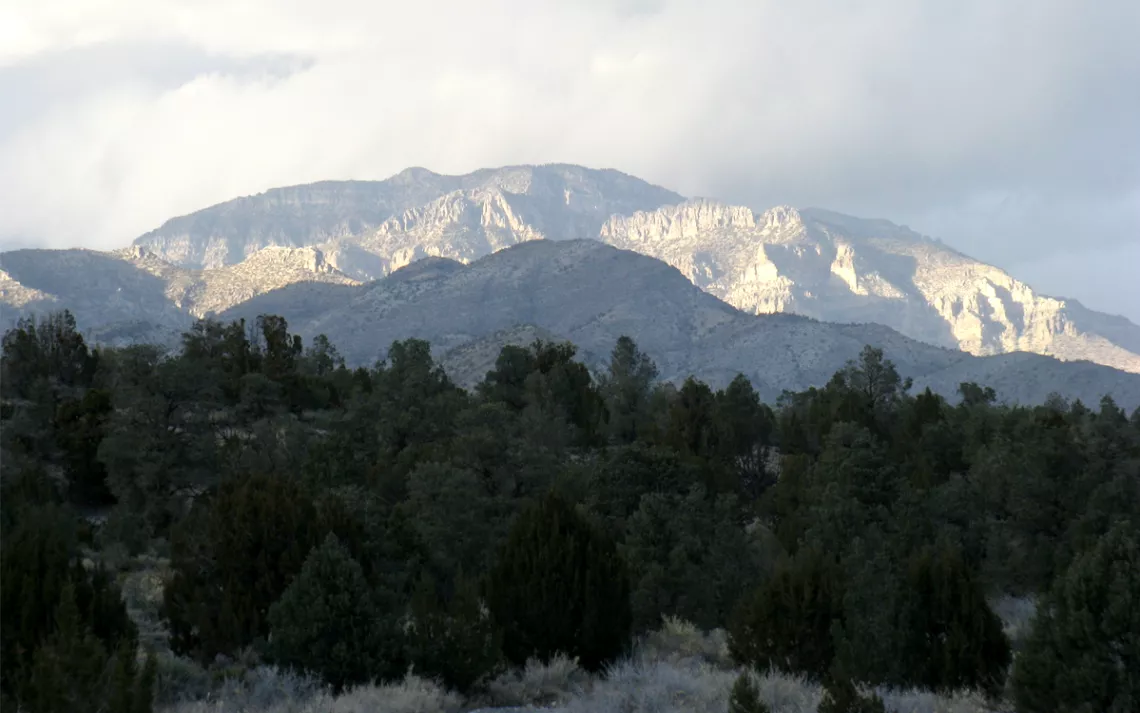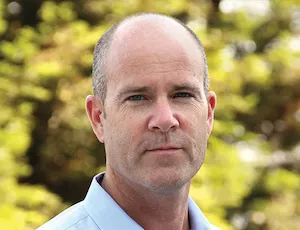Indigenous Peoples Are Crucial to Reaching the 30x30 Goal
Only partnerships can save the planet

The Sheep Range in the Desert National Wildlife Refuge | Photo by USFWS Pacific Southwest Region

Just beyond the lights of Las Vegas lies the largest wildlife refuge in the Lower 48. The Desert National Wildlife Refuge is home to hundreds of species in seven distinct biological communities, including the largest population of desert bighorn sheep in the world. Part of the ancestral lands of the Southern Paiute people, the refuge contains sacred sites, artifacts, and petroglyphs that carry the history of the Paiute nations and remain integral to their cultural and spiritual practices today.
But the Desert National Wildlife Refuge, like so many of the wildlands in the United States, faces threats. Every 30 seconds, industrialization and resource extraction consume a football field's worth of wild nature. In the case of the desert refuge, it's the US Air Force that would like to encroach further upon these protected lands. Although the air force already uses about half the refuge for military exercises, it has made attempts in the past to test its bombs on even more land. If the military were ever to expand its bombing range, it would harm the area's rich mix of wildlife, limit recreational access, and damage sacred Indigenous sites.
Permanently protecting places like the Desert National Wildlife Refuge will be an essential part of preserving 30 percent of wild nature by 2030. That's the target that scientists say we must reach to prevent the extinction of up to a million species and safeguard the forests, grasslands, and wetlands we need in order to suck up enough carbon to slow climate change. Committing to a 30x30 goal was one of President Joe Biden's earliest executive actions, and he has appointed an Indigenous woman and 30x30 advocate, Debra Haaland, to steward our public lands as interior secretary. Those are exciting signs of progress, but 30x30 can't be won by a powerful man signing a piece of paper or even a figure as inspirational as Haaland.
Our challenge is to bring more lands under protection in the next nine years than we have in the previous 129 years of Sierra Club advocacy. Currently, just 12 percent of US lands are protected. To reach the 30x30 goal, we'll need a larger, more inclusive conservation movement.
The seeds of that movement are being sown across the country. As the campaign to protect the Desert National Wildlife Refuge shows, working in deep partnership with Indigenous nations like the Southern Paiutes is the foundation for such a movement. It's only by working together that conservationists and tribal communities have been able to block the many proposals to turn more acres of the refuge into a bombing range.
Despite the centuries-long and ongoing theft of Indigenous territories, the original stewards of the land have been the guardians of much of the world's biodiversity. Though Native peoples are just 5 percent of the global population, their protected lands contain 80 percent of the world's biodiversity. The exploitation of Indigenous peoples has always gone hand in hand with the exploitation of their lands. Respecting, and demanding recognition of, tribal rights is an important step toward stopping both.
Building partnerships with Indigenous peoples requires environmental advocates to respect Indigenous sovereignty. In the past, conservationists often aimed to protect landscapes from even the millennia-old practices of Indigenous nations, such as seasonal burnings. Repairing this harm means honoring Native peoples' rights to hunt, fish, gather, and conduct ceremonies on their homelands, even as we fight against harmful development.
Building the big-tent movement capable of protecting 30 percent of nature by 2030 won't be easy. But everything in the Sierra Club's history has prepared us for this moment. We've spent more than a century learning how to win protections for the natural world. Now, the stakes are at an all-time high. We're on the brink of a mass extinction. The climate crisis threatens to spiral out of control. There's no time to spare in creating a movement powerful enough to save the places we love.
This article appeared in the Summer quarterly edition with the headline "Partnerships for Protection."
Photo by Josh Deware
 The Magazine of The Sierra Club
The Magazine of The Sierra Club



